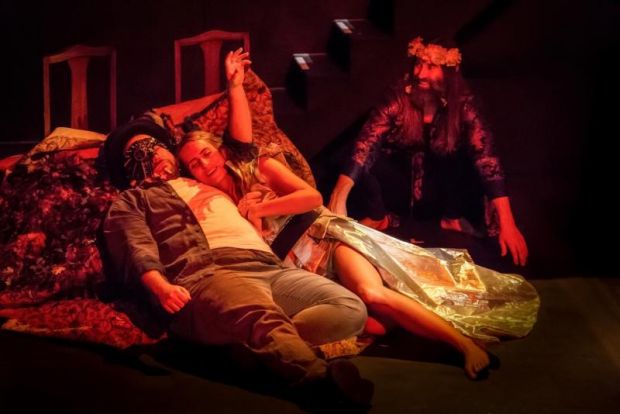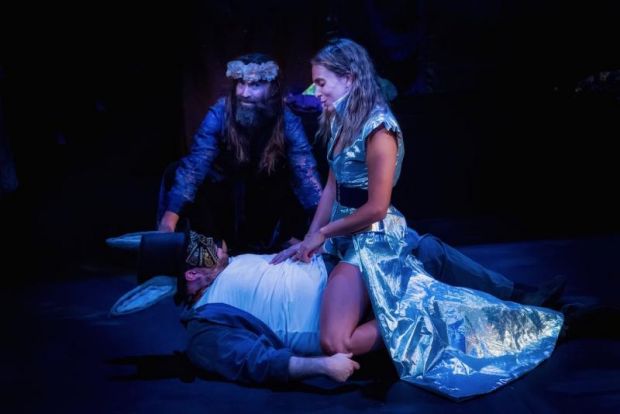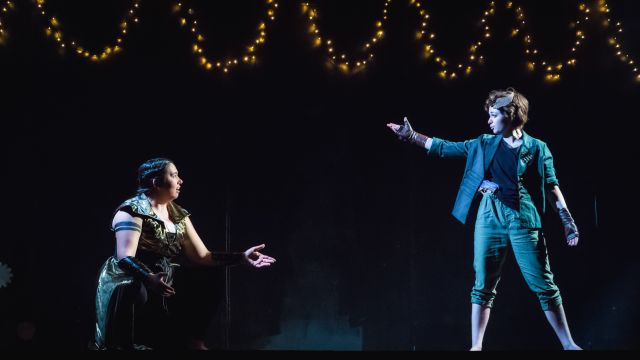A Midsummer Night’s Dream
Touted as the best playwright who ever lived, William Shakespeare died 400 years ago, but his work is more popular than ever. Worldwide, new generations are finding and revisiting the Bard, in part because of the breadth of the strong themes that run through each piece. His works are relatable, timeless and universal, and appeal to new generations of actors and audiences, and this is very much the case with The University of Adelaide Theatre Guild’s current production of Shakespeare’s A Midsummer Night’s Dream.
The largely young cast, directed by experienced Shakespeare director Megan Dansie, revels in the opportunity to mount his most performed play. It is described as appealing to people who are not familiar with Shakespeare, a great play to begin with. Audiences are, of course, guaranteed a comedy, even those not proficient with performing or seeing a play performed in verse. The play at its simplest level is a story of four lovers who go out to the woods and get confused. It’s also clever and funny.

The play consists of five interconnecting plots, connected by a celebration of the wedding of Duke Theseus of Athens and the Amazon queen, Hippolyta, set simultaneously in the woodland and in the realm of Fairyland, under the light of the moon.
Dansie has chosen a theme using the sub-genre of science fiction, steampunk. The set walls are decorated with colourful cog shapes and the stage floor is covered in the same transfers, creating a link to 19th century steam powered machinery. We first meet the workmen who are aspiring amateur actors, keen to perform at the Duke’s wedding, and the array of costumes chosen establish the link with the Industrial era. Small things like sticky tape on the map, were, of course not of that period, but overall attention to detail supported believability and the design concepts chosen. Apart from the cogs and these costumes, the steampunk concepts are too subtle perhaps for me to recognise as features of this version.
Costumes by Aubade, Miriam Keane, Dansie and the cast, could have been unconnected, but in fact, were a highlight for me. Oberon and Titania’s costumes were appropriately regal and dramatic and the workers’ costumes were appropriately ‘roughly hewn’. The well to do Athenians are dressed in appealing costumes and use subtle changes and additions. There is careful attention to small features that makes the costumes interesting and ensures that they support characterisation.

My favourite subplot involves Oberon and Titania, the King and Queen of the fairies who are fighting, again. Bronwyn Palmer as Oberon is convincingly powerful. She uses the stage well and has some of the most appropriate Shakespearian rhythm and delivery. She is versatile, being equally comfortable, if a little physically overbearing, as gentle Hippolyta, the Duke’s bride. Annie Matsouliadis is at her best as Theseus, despite looking resplendent as Titania. Frederick Pincombe looks as we imagine Puck to be. Pincombe uses physicality and physical comedy very well. his performance developing well, particularly in the second act, where he delights in the comedy opportunities. Bugs Moyse, Sophie Livingston Pearce and Michael Leach are all fairies. Well dressed, they support well, but Leach appears rather like an extra from the Woodstock film. His voice is powerful, and undoubtedly apt for other roles, but his accent and rhythm are a steep departure from the vocal work of the other actors.
The four Athenian lovers are a mixture of decorous and outrageous. Finty McBain as Helena shows enormous potential with the cadence, pace and delivery of this role. Additionally, her audience contact is electric and her comedy delivery is delightful. Airlie Windle is winsome and gives excellent moments as the slighted, abused and cast aside Hermia. As Lysander, Reuben Fernee is a handsome leading young man. Both he, and Ashraf Abdul Halim as Demetrius looked good and will benefit from more work vocally. The rhythm of Shakespearian dialogue is almost like learning a new language and for these actors, the fluency is still developing.
Quince, played by Emily Dalziel, is well cast as the hapless director of the raggle taggle group of workmen. Her vocal work, though sometimes inconsistent, adds much to the humour, particularly as part of the Pyramus and Thisbe play. Nick Bottom, is a gift for Matthew Houston, who is beloved for his comedy work. Until the players play, his Shakespearian delivery was impressive and engaging, as he dances the audience through the full gamut of his emotions and experiences. His scenes with the asses head are impeccable. The workmen’s play may have suffered due to COVID impacting on rehearsals. There is no doubt that the Pyramus and Thisbe play is funny, but it loses its place in this play as true to the author’s rhythm. The audience loved Houston as Pyramus, particularly the famous death scene, but it moved into melodrama minus the 1600’s style.

I would also urge all of the players to check their underwear for colour and durability for that scene.
Flute, Starveling, Snout and Snug have, it seems, been directed to constantly upstage the actors whilst delivering important dialogue. They are meant to be beginners in the story, but this is unnecessarily distracting. It is said that there are ‘no small roles’ and Olivia Jane Parker who appears briefly as Philostrate is evidence of that old dictum, effortlessly having fun with the role.
Dansie has incorporated genius touches in this very ‘user friendly’ play. The play, at this stage, is very uneven and not well served by lighting that obscures actors’ faces and creates spotlit areas that the actors often miss. Having said that, it is a delight to see young people bringing this wonderful play to life. It is a must see for students and an opportunity for all to enjoy a great night’s entertainment.
Jude Hines
Photographer: Richard Parkhill.
Subscribe to our E-Newsletter, buy our latest print edition or find a Performing Arts book at Book Nook.

